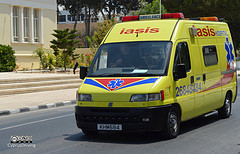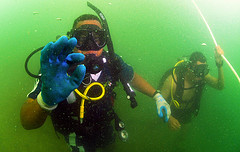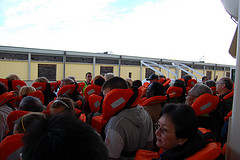 It’s an all too common scenario these days. As airlines have jacked their baggage fees, passengers worked harder to save a buck by carrying less and schlepping it all through security themselves. As a result, overhead bins fill more quickly and some passengers are asked to hand over their carry-ons.
It’s an all too common scenario these days. As airlines have jacked their baggage fees, passengers worked harder to save a buck by carrying less and schlepping it all through security themselves. As a result, overhead bins fill more quickly and some passengers are asked to hand over their carry-ons.
Wait! Passengers are told to put their valuable stuff in their carry-ons so they don’t get stolen from their checked luggage. We’ve established that luggage raiding remains a travel hazard, but how safe is that formerly carry-on bag now?
Not very safe apparently.
The airlines will not compensate for damage or loss to valuables such as cell phones, cameras, laptops and tablets, documents, copies of your passport, eyeglasses, jewelry … the list goes on. So, if you have to travel with those items you pack them in your carry-on right?
If you are told that the overhead bins are too full and you’ll have to hand over your bag, the flight attendants don’t follow up with: “and please take your valuables out because if they get stolen, you won’t be compensated.” The bottom line is that the airline is not accountable.
So what’s a passenger to do?
Don’t simply hand over your bag at the plane entrance. If you must do this, remove anything that is on the airline’s ‘valuables’ list, which are at least (but not limited to):
- electronics, including laptops, iPads, e-readers, anything with an on/off switch
- cameras, lenses, and associated equipment
- jewelry and watches
- designer purses and handbags
- designer clothing and shoes
- cash, credit and debit cards, passports
- documents of any kind
- fragile items, art, and antiques
- heirlooms, collectibles, and artifacts
- antlers
- CDs, DVDs, and games
- china, glass, ceramics, and pottery
- computer equipment and audio/visual equipment
- flowers and plants
- medicines
- keys
- perfume
- alcohol
- gift cards, gift certificates and money
- musical instruments
- natural fur items
- tools
If you’re not sure what’s on that particular airline’s ‘valuables’ list, ask the flight attendant. If you appear worried enough, they may provide the list or move some bags around so you can keep your stuff with you.







